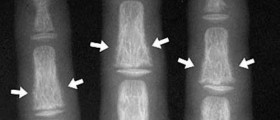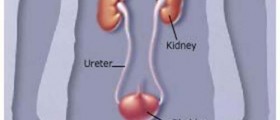
Hyperparathyroidism is a medical condition characterized by excessive production of parathyroid hormone, the one produced by the parathyroid glands. There are basically 4 parathyroid glands located in the neck, next to the thyroid gland or even within the thyroid gland. Not all the people have all four such glands (they may have fewer parathyroid glands) and it is also possible for the glands to develop inside the chest. The hormone these glands produce plays significant role in the control of the amount of calcium in the blood and bones. Any increase in the normal levels of parathyroid hormone leads to many different disturbances, some of which may be rather severe.
Endocrine Disorder with too much Production of Hormones
Parathyroid hormone is apart from the aforementioned control of calcium levels in the blood and bone also important for maintaining optimal levels of phosphorus and vitamin D. In case the level of calcium is low, the body increases the production of parathyroid hormone. Calcium gets extracted from the bones and eventually the amount of the mineral reaches desirable level. Also, the hormone stimulates reabsorption of calcium from the kidneys and intestine. Once the level of calcium becomes optimal, further production of parathyroid hormone slows down.
Primary hyperparathyroidism is a condition that actually develops as a consequence of direct changes affecting the gland. Namely, the gland becomes swollen (hypertrophic or hyperplastic) and starts to release too much hormone. In the majority of cases patients who are suffering from primary hyperparathyroidism are actually suffering from adenomas of the gland (benign tumors). Rarely, enlargement and excess production are associated with malignant tumors of the parathyroid gland. Primary hyperparathyroidism predominantly occurs in people older than 60 years of age. Women seem to be affected more. The risk is higher in people who have undergone radiation of the head and neck tumors.
As for symptoms of primary hyperparathyroidism they generally develop as a consequence of hypercalcemia (increased level of calcium in the blood). Patients develop so called moans of several types.
Moans associated with stones refer to kidney stones, nephrocalcinosis and diabetes insupidus characterized by excessive thrust and frequent urination. Excess of calcium is the one blamed for kidney stones which may in the long run cause irreversible damage to the kidneys and even trigger renal failure.
Furthermore, bone moans are connected with complications affecting various bones. Patients suffering from hyperparathyroidism typically develop osteitis fibrosa cystica. The bones become weak and patients complain about pain. Pathological fractures are common once the disease has significantly progressed. Osteomalacia, osteoporosis and arthritis are also potential complications patients with hyperparathyroidism may eventually face with.
Abdominal groans is the term that refers to gastrointestinal issues such as indigestion and constipation. Nausea and vomiting also occur. Hypercalcemia is a common reason why some people develop peptic ulcers and they may even develop acute pancreatitis.
And finally, there are 'psychiatric moans'. They actually represent effects of hypercalcemia on the central nervous system. These include lethargy, fatigue and depression. More complex cases are characterized by memory loss, psychosis, ataxia and delirium. Completely neglected patients end up in a coma.
Management of Primary Hyperparathyroidism
In case doctors suspect hyperparathyroidism they will first order blood tests and evaluate the level of parathyroid hormone in the blood. They also check the level of calcium, alkaline phosphatase and the level of phosphorus. Patients with the disease tend to have elevated levels of parathyroid hormone, calcium and alkaline phosphatase and low levels of phosphorus.
What is more, it is essential to perform bone X-ray and a bone density test. They might reveal bone loss, fractures and bone softening depending on how much the disease has progressed. What is more, X-ray, ultrasound and even CT scan of the kidneys reveal calcinosis. Neck ultrasound may confirm the presence of enlarged parathyroid glands which is essential for the final diagnosis of primary hyperthyroidism.
Treatment basically depends on the severity of symptoms and the underlying cause of the disease. Mild elevations in calcium levels without associated symptoms and signs do not require treatment. Such patients are only monitored. Patients with more complex disease, especially those in whom the kidneys do not work properly, or those with extensive calcium loss from the bones must start with treatment as soon as possible. Prevention of kidney stones may be efficient if one consumes plenty of fluids on a daily basis.
Medicamentous therapy these patients may be prescribed include calcimimetics (medications that mimic calcium circulating in the blood), hormone replacement therapy (menopausal women with signs of osteoporosis) and bisphosphonates.
In spite of conservative approach many patients eventually undergo surgical removal of the enlarged parathyroid glands (the ones affected by hyperplasia or adenomas). It is essential to spare other non-affected parathyroid glands. Risks associated with parathyroidectomy are damage to the nerves controlling the vocal cords and long-term low calcium levels which require permanent treatment with calcium and vitamin D supplements.
All in all, the prognosis of the condition is relatively good because in most cases primary hyperparathyroidism is a mild disease. Only patients who do not turn to their health care providers on time or simply refuse to be treated may eventually develop severe bone damage, pathological fractures, pancreatitis, pseudogout and complications associated with kidney stones.
















Your thoughts on this
Loading...